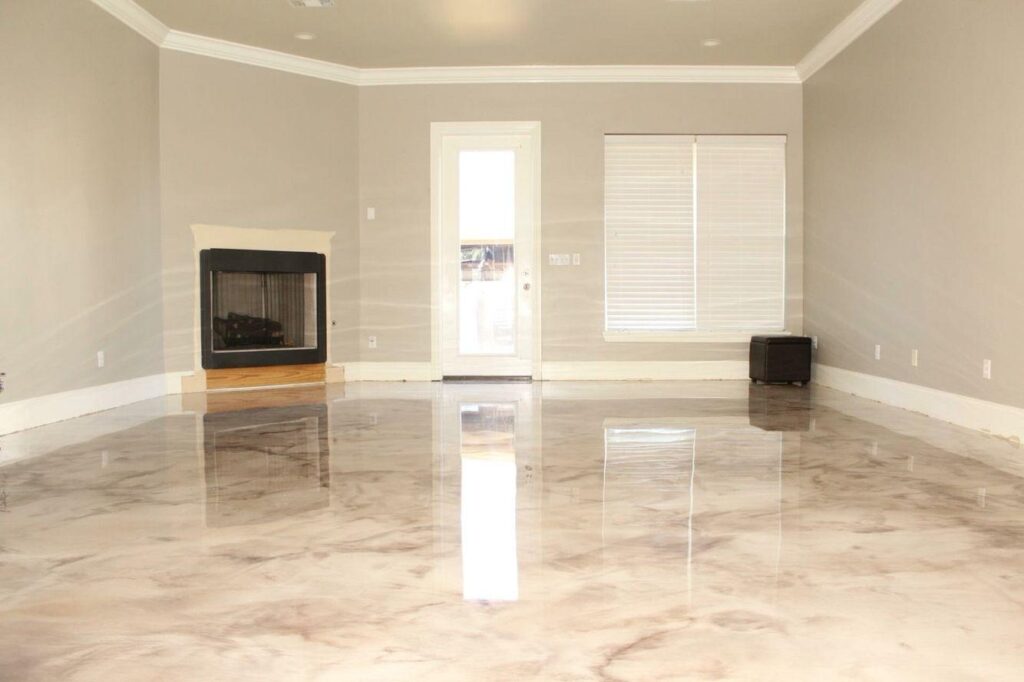Introduction
Have you ever found yourself standing in awe of a shiny and sparkling floor at a commercial establishment, wondering about its secret? You’re not alone. This marvel of design is often thanks to epoxy flooring. Perhaps you’re contemplating a renovation project or building from scratch and pondering over suitable flooring options? In this blog post, we’re going to dive deep into the world of epoxy flooring.
Epoxy is a buzzword in contemporary design circles, but what exactly is it, and why has it risen to such prominence? How do you navigate through the broad array of types and styles to ascertain the best fit for your property? Over the next few lines of text, we will explore the ins and outs of epoxy flooring central coast. Let’s unravel the magic behind those glistening surfaces!
From their inception, composition, advantages, and disadvantages, to their varied types, styles and identifying the perfect one for your dream property, this comprehensive guide endeavors to address all your epoxy-related queries. So let’s dive into this magical world without any further ado.

Why Is Epoxy So Special?
Epoxy, a unique blend of resins and hardeners, creates a rigid plastic material through a chemical reaction. This versatile material bonds exceptionally well with most base layers, forming an astonishingly durable, resistant and long-lasting surface layer. It’s not only capable of withstanding high traffic and industrial wear and tear but is also aesthetically pleasing, making it a popular choice for both commercial and residential properties.
Epoxy presents a myriad of customizable options, with countless colors and finishes to choose from. It can mimic natural materials or exhibit an artistic, abstract impression, making each floor a true reflection of the property owner’s personality. As the cherry on top, epoxy floors are incredibly low maintenance.
However, just like any other material, epoxy isn’t free from downsides. It can be slightly expensive and requires a highly skilled installation team for proper application, without which cracks might appear. We’ll delve deeper into these aspects later on in this post.
What are The Types of Epoxy Flooring?
Broadly, epoxy flooring can be divided into three main types: Solid Epoxy, Solvent-Based Epoxy, and Water-Based Epoxy. Each type comes with its unique characteristics and applications.

The solid epoxy type is made up of 100% epoxy, making it the most durable, long-lasting, and resilient of the lot. Solvent-based epoxy is a more flexible variant which allows for a lower viscosity level, facilitating application. Lastly, Water-Based epoxy is generally deemed safe and easy to apply. However, it doesn’t offer the same level of robustness as its counterparts.
The Styles: How to Make a Statement with Epoxy?
Epoxy flooring is available in a multitude of styles that go beyond the conventional monochromatic sheen. This includes the terrazzo style, metallic style, and flake style, among others. The Terrazzo style employs chips of different materials like marble, quartz, and glass within the epoxy to create a visually stunning effect. Metallic epoxy exhibits a three-dimensional look, often giving an illusion of depth and movement. Flake style flooring uses colorful chips and flakes within the layer to create a vibrant and cheerful ambiance.
Pros and Cons: The Balancing Act
The pros of epoxy flooring encompass durability, resistance to chemicals, heat, and impact, low maintenance, variety in design options and the ability to cover minor floor defects. Albeit these advantages, there are some cons to consider, such as its higher cost, installation complexities and potentially slippery nature.
Deciphering the Perfect Pick
When choosing the ideal epoxy flooring for your property, consider factors such as property usage, budget, decor, and personal preferences. A commercial high-traffic area may benefit from solid epoxy flooring, while a residential space might be better suited for a more design-oriented variant like the terrazzo or metallic style.
Conclusion
Epoxy flooring offers a combination of durability, aesthetics, and functionality that few other flooring options can match. This versatile material can adapt to your property’s needs, whether it be the charm of a rustic café or the grandeur of a high-end showroom. However, successful epoxy flooring installation requires careful consideration, budget allocation, and the aid of skilled professionals. The world of epoxy flooring offers an extensive palette for your imagination to play with – from its composition to its myriad styles, each aspect can be tweaked to reflect your unique persona. As the famous architect Frank Gehry rightly said, “Architecture should speak of its time and place, but yearn for timelessness.”, and epoxy flooring does just that, offering a timeless appeal tailored to your taste and requirements.
